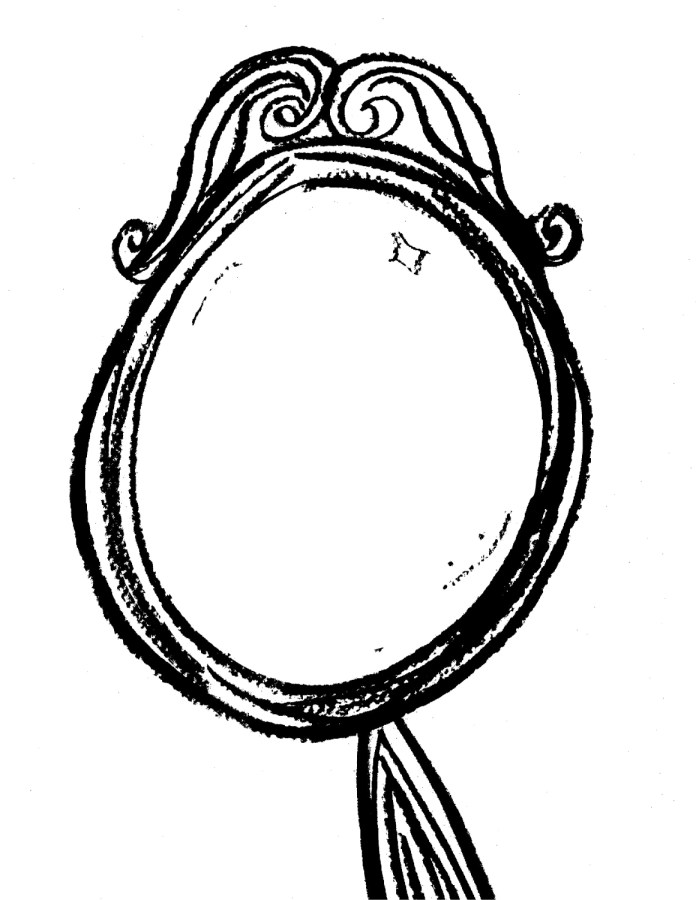Van Wagenen: The Subtle Language of Physical Appearance
(Design by Mary Allen | The Daily Utah Chronicle)
February 8, 2023
In junior high, I wore dark blue skinny jeans and a graphic t-shirt every day, without fail. I hated the way I looked and felt in these clothes. They did not reflect who I am as an individual, and instead of highlighting my unique personality, they forced me to blend into what I considered normal as a young teenager.
Now, years later, my junior high self would love my sense of style. I feel great in my clothes. I’m dressing for myself and no one else. I feel empowered. My clothing has become a tool for expressing myself.
The Language of Clothing
In an email interview, Mojdeh Sakaki, program manager at the Salt Lake Community College Fashion Institute, quoted a blog post that said “the clothes that we wear have a practical purpose. They keep us warm and comfortable at the very least. Our clothes also become a part of our identity.”
Sakaki continued, “Whether we like it or not, what we wear gives off signals that help people to form an impression of us.”
She then posed a series of questions: “Is it a way to reduce the gap between your inner state and your outer appearance, and expression of your personality? Is it a visual representation of your culture or social group? Or is your dress sense little more than an adherence to cultural norms?”
In response to these questions, Sakaki explained it could be all three.
“Physical appearance is a kind of language, a subtle communication,” she said.
Communication through spoken and written language is powerful. From famous speeches to world-altering treaties, language has shaped the lives of the global community for years. While the clothes you wear will probably never influence large-scale, world-changing events, they do impact your interpersonal relationships. Take, for example, if you were to show up to a formal business meeting in sweatpants and an oversized hoodie. More likely than not, you wouldn’t be taken seriously and perhaps even asked to change into more appropriate attire. In this scenario, your clothes aren’t sending the right message to those around you.
The concept of dressing appropriately for your environment has been weaponized against people, especially marginalized communities. From Black hair being considered inappropriate for the professional workplace to the sexualization of young female students in junior and high schools, styles and appearances have been attacked for generations.
Personal Style Amid Public Pressure
Like it or not, the culture of Utah is practically run by members of the Church of Jesus Christ of Latter-day Saints. This creates a dominant conservative modesty culture for everyone in the state. Members are notorious for their aspired perfectionism, but that perfectionism becomes harmful when anyone makes superficial snap judgments, especially to non-members of the faith.
As someone who has lived in Utah my entire life, I have seen how church standards have bled into all areas of life — for members and non-members alike. This is particularly evident in junior and high school dress codes, which blatantly target female students for exposed shoulders and midriffs. Enforcing sexist dress codes is harmful to these students. They should be sitting in class, but instead sit in the principal’s office getting scolded for “distracting” male students and staff.
“I think one thing that’s really key to [modesty] is that, even if modesty is something that you center your fashion upon … modest does not equal stylish. … It’s really just about finding things that … are true to your personality and identity,” said Alexa Hurtado Angeles, chief marketing officer of the University of Utah’s Fashion in Business Club.
A lifelong Utah resident herself, Hurtado Angeles shared some of her experiences growing up within the modesty culture the church has formed.
“When I was younger, I feel like … especially during those formative years in middle school, that my style was heavily influenced by my peers and what was popular at the time and also, ‘What is acceptable?’” she said
Like many people who spent their young and impressionable years in the state of Utah, Hurtado Angeles felt certain styles were taboo, preventing her from staying true to herself and her personal style.
People are unique — what works for one might not work for another. If someone finds joy in dressing a certain way, why extinguish that freedom? Allowing people to dress how they want improves mental health, confidence and validates important components of self, such as gender identity.
As Utahns, we need to do better. Don’t limit yourself to first impressions. If someone is wearing a tank top rather than a sleeved top, so what? Why does it matter to you if someone is wearing Bermuda shorts instead of short shorts?
Recognize when you are making snap judgments and then challenge those impressions.
Dress in the way that brings you joy.









